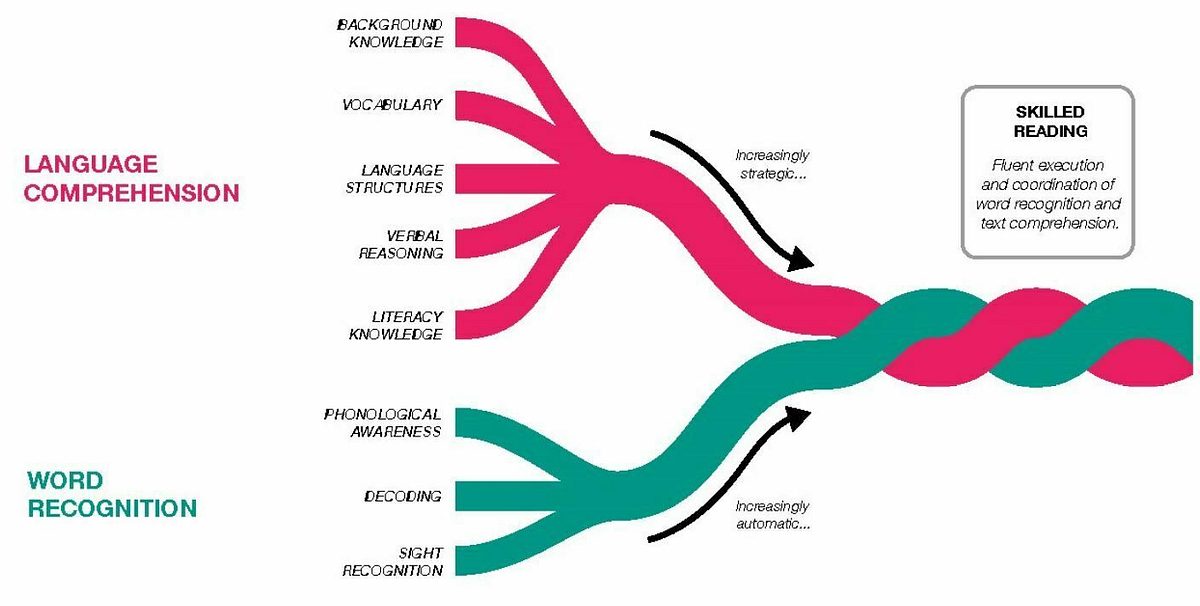Why is the teaching of reading so complicated? Indeed, what can we do to support teachers, who have received very little training to teach reading, in handling this tricky challenge?
Knowing about the complexity of reading isn’t enough to prepare us for the challenges of teaching children to read. Simply ‘knowing’ does not always lead to ‘doing’ reading differently in the classroom.
The teaching of reading comprehension is one approach to developing strong readers and it simply cannot be left to chance.
Most recently in primary schools, and particularly in Key Stage 1, the teaching of phonics has understandably been a priority. Without the foundation of decoding, reading simply doesn’t develop
Yet, we all know that the goal of reading is to comprehend what we read, so we also have to consider developing our pupils’ reading fluency. Additionally, reading comprehension strategies offer a further thread to strengthen our pupils’ ability to go on to confidently comprehend what they read.
Hollis Scarborough’s ‘reading rope’ helps remind us of the many different threads that are essential to develop our pupils as skilled readers at all key stages. Tending carefully to each thread in the rope matters if we are to weave a strong reading rope in every classroom

The value of reading comprehension strategies
The sense of entitlement a strategic reader feels, as they pick up a book, is a powerful characteristic of many children. The children who join our schools buoyed by the rich home literacy environment they have experienced. The expectation that they will enjoy and understand texts comes from the variety of literacy experiences they have enjoyed in the home.
For such pupils, decoding words and reading fluency can come along with seeming ease. It can appear ‘natural’ and effortless. Their additional reading practice strengthens both their knowledge and skills.
Those early literacy experiences, borne out of a rich home learning environment, provide the optimum platform from which to develop as strategic readers
But what about the children who don’t come to us with those experiences?
For a significant number of disadvantaged children, even owning a book may be unlikely. How much less likely are these children then, to have the strategies needed to successfully interact with texts?
The teaching of reading comprehension is one approach to developing strong readers and it simply cannot be left to chance
The explicit teaching of reading comprehension strategies is found to support an average gain of +6 months’ additional progress (based on extensive evidence to support this area from a range of studies over the last 30 years). Studies in the UK have found that there is evidence that children from disadvantaged backgrounds may benefit more
In the recently updated Improving Literacy in Key Stage 1 guidance report, the explicit teaching of reading comprehension strategies is carefully unpacked, with teacher prompts to facilitate the teaching of each of the strategies

These prompts are not intended to be a script. They are about providing starting points for discussion in school about how each of the strategies can be modelled and scaffolded for children. This model could offer a discussion prompt for teachers considering their ‘book talk’ and how they foster effective reading comprehension strategy instruction.
Reading comprehension strategies overlap with ‘Reciprocal Reading’: a structured approach that teachers can use to support reading comprehension. Following the ‘Reciprocal Reading’ model, children initially work collaboratively in groups, with guidance from the teacher. Over time, there is a gradual release of responsibility so that groups and students can use the strategies more independently.
The Power of Reciprocal Reading – a perspective from the classroom
The teaching of reading is complex. There is an inevitability to that, because the act of reading is a brilliantly complex process.
Therefore, the challenges teachers face to monitor and improve their practice in the teaching of reading is possibly never-ending. However, the most important lever schools have to support disadvantaged children to read with the same sense of entitlement as their more advantaged peers, is great teaching
Reading comprehension strategies then offer one powerful thread in the reading rope that teachers can get to grips with
